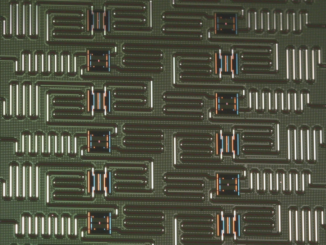
The automotive industry has shown keen and early in quantum computing over the last several years, beginning most notably with Volkswagen, which rolled out a traffic simulation system with its hardware partner, D-Wave. That was in 2017 and while there have been a few other stories focused on quantum’s role in everything from traffic to designing better fuel technologies, the automotive momentum for quantum seems stuck in the slow lane.
Think tanks like McKinsey, for instance, see a vibrant role for quantum in everything from pushing the EV arena forward and working optimization magic for auto warehousing, dealers, repair shops, and supply chain management. Still, much of this seems far off in terms of broad commercial integration.
For quantum to jump into the daily express lane for the automotive industry, it might take a piecemeal approach, with certain elements of vehicle design or use finding a fit on quantum systems. But there has to be cause to put forth the software and time investment (better, cheaper, faster, etc.).
One example might be in a specific aspect of vehicle design—modeling drive cycles, an aspect that directly relates to a car’s efficiency and operation. This has long-since been the domain of Fourier transform simulations on high performance computing systems. But this problem appears to be well-suited to gate-based quantum systems, as recently demonstrated.
Using IBM-Q quantum services, a team was able to reach Fourier-driven drive cycle modeling results faster via a 15-qubit run on the IBM-Q16 Melbourne quantum simulator, paving the way for other workloads based on Fourier transform for quantum machines. These possible future uses can include everything from solving PDEs used in various HPC areas as well as in signal processing, compression, acoustics, and other areas.
While their results are promising, this is still a small quantum simulator and the team observed “significant noise” in the process, which meant they had to create and use error correction mechanisms. This is one of the most important barriers to practical quantum computing.
“Current quantum computers are known to have errors, and in the era of NISQ, it is imperative to develop methods that can achieve quantum speedups despite these errors. The study proposed a simple error correction method to estimate the probabilities consistent with QFT, without compromising the computational complexity. The method was able to reasonably well recover the probabilities.”
While this quantum simulation work for Fourier transforms is promising, the team behind the results says that in transportation in particular, the scalability of quantum systems is far from ready for large-scale programs that could have real-world implications. For instance, they say, “even a modest network of 1000 vehicles and 64 road sections would require 6000 qubits, which would be extremely cost prohibitive.”
Despite clear limitations, they add that we are nonetheless “embarking on an exciting frontier of quantum computing that has significant implications on vehicle dynamics, transportation planning and traffic management. These could help with identifying issues quickly and rapidly determining optimal responses, which could in turn help reduce congestion, emissions and improve safety.”
As for optimistic McKinsey, they see opportunities for automotive every step of the way, from component design to global supply chains. It will just take a while–a long while.
They estimate “one-fifth of companies in the QC value chain provide enabling solutions. Their offerings include existing components, such as cooling units, processing tools for making qubits, and the materials that compose qubits. This area could become a potential playing field for some upstream automotive suppliers, including tier-two and tier-three vendors, which produce control units and thermal solutions that are potentially transferrable to quantum computers.”
They add, “Automotive suppliers will not immediately profit from large-scale-production opportunities, since QC is still in its infancy, but they will over the long term. We expect enablers to become more relevant as the QC industry matures, gains scale, and one hardware approach begins to dominate.”





Be the first to comment